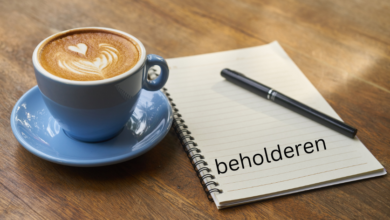Unleash Your Creativity with Skşi: A Beginner’s Guide

Skşi, also called watercolor painting, is a stunning and versatile medium that has been utilized by artists for centuries. It entails using water-based totally pigments to create lovely works of artwork on paper or other surfaces. Skşi is known for its transparency and luminosity, in addition to its ability to create smooth, flowing results. It is a popular preference for artists of all skill stages, from beginners to skilled experts.
One of the important thing characteristics of skşi is its transparency. Unlike different portray mediums, skşi permits light to skip thru the paint, growing a completely unique luminous effect. This transparency also permits for layering and blending of colors, creating smooth, diffused transitions. Skşi is also regarded for its fluidity, because the paint can be easily manipulated with water to create stunning washes and gradients. Additionally, skşi is a forgiving medium, as mistakes can frequently be corrected by lifting or transforming the paint.
Skşi can be used to create a wide variety of results, from delicate, ethereal washes to bold, vibrant hues. It can be implemented in thin, obvious layers to build up intensity and complexity, or used more opaquely for formidable, expressive marks. Skşi also can be blended with other mediums, including pen and ink or gouache, to create mixed media artistic endeavors. Overall, skşi is a versatile and expressive medium that offers endless opportunities for creative exploration.
Getting Started with Skşi: Tools and Materials
Before you start your skşi adventure, it’s crucial to gather the right gear and substances. The most vital device for skşi portray is, of course, the paint itself. Skşi paints are available in principal forms: tubes and pans. Tubes are full of focused pigment that can be diluted with water to create paint, while pans are solid blocks of dried paint that can be activated with water. Both alternatives have their blessings, and plenty of artists opt to use a mixture of each.
In addition to color, you may also want a selection of brushes. Skşi brushes are available in quite a few sizes and styles, every perfect to distinctive strategies and effects. Round brushes are flexible and can be used for both pleasant details and vast washes, at the same time as flat brushes are perfect for creating sharp edges and formidable strokes. It’s a great concept to spend money on more than a few brush sizes to provide you the flexibility to create quite a few marks and textures.
Another critical device for skşi painting is paper. The sort of paper you pick can have a tremendous impact on the outcome of your paintings. Skşi paper comes in distinctive weights and textures, and it’s vital to choose a paper that is appropriate for the strategies you propose to use. For example, tough paper is ideal for developing texture and adding intensity, whilst clean paper is better desirable to designated paintings. It’s also essential to bear in mind the archival exceptional of the paper, as this can affect the longevity of your paintings.
Exploring Different Techniques in Skşi
Skşi portray offers a huge range of techniques that can be used to create distinctive results and textures. One of the maximum basic techniques is the wet-on-wet technique, which entails making use of moist paint to a wet surface. This technique permits the colors to combination and float together, creating smooth, subtle edges and exquisite transitions. It’s a super way to create atmospheric outcomes and soft, dreamy landscapes.
Another famous method in skşi portray is the dry brush method. This entails the use of a brush with very little water and a thick, concentrated paint to create formidable, textured marks. Dry brushing is ideal for adding detail and texture on your artwork, and can be used to create a wide variety of effects, from delicate traces to expressive, gestural marks.
In addition to these techniques, skşi portray additionally gives the opportunity to test with unique gear and substances. For instance, salt can be sprinkled onto moist paint to create thrilling patterns and textures, whilst protecting fluid may be used to preserve areas of white paper and create sharp, smooth edges. Skşi painting is a flexible and expressive medium that gives countless possibilities for inventive exploration.
Finding Inspiration for Your Skşi Projects
Finding inspiration in your skşi tasks may be as simple as taking a walk in nature or travelling a neighborhood art gallery. Skşi painting is a flexible medium that can be used to capture a huge range of topics, from landscapes and still lifes to photographs and summary compositions. Whether you’re inspired by the splendor of the herbal global or the power of the city environment, skşi portray gives infinite opportunities for artistic expression.
One of the excellent ways to find concept for your skşi initiatives is to spend time observing the sector around you. Take a sketchbook with you wherever you go and make quick sketches and notes of the things that seize your eye. Pay interest to the manner mild and shadow play throughout surfaces, the colors and textures of various items, and the general mood and surroundings of your surroundings. These observations can provide a wealth of proposal in your skşi art work.
In addition to observing the sector round you, it is able to also be helpful to take a look at the paintings of different artists. Visit artwork galleries and museums to look skşi art work up close, and pay attention to the techniques and procedures that resonate with you. You also can explore skşi portray books and on line assets to find out about specific artists and styles, and to advantage insight into the innovative procedure. By immersing yourself within the world of skşi portray, you can locate idea and thoughts for your personal tasks.
Understanding Color Theory and Composition in Skşi
Color principle and composition are crucial factors of skşi portray, and understanding these principles can help you create more dynamic and harmonious artistic endeavors. Color principle is the take a look at of the way colours engage with every other, whilst composition refers to the association of elements inside a portray. By studying these ideas, you can create skşi art work which can be visually enticing and emotionally resonant.
One of the key concepts of colour theory is the shade wheel, that’s a visual representation of the relationships between one of a kind colorings. The coloration wheel is split into primary, secondary, and tertiary colours, and information how these colors interact assist you to create harmonious colour schemes for your skşi paintings. For example, complementary shades, which might be contrary each different at the coloration wheel, may be used to create colourful, dynamic compositions, while analogous colors, which can be subsequent to every different at the color wheel, can be used to create more subtle, harmonious effects.
In addition to expertise the relationships between colours, it’s also critical to recollect the psychological and emotional results of various shades. Warm colours, such as reds, oranges, and yellows, are frequently associated with power and passion, whilst cool colorations, inclusive of blues and greens, are regularly related to calm and calmness. By the usage of color strategically to your skşi artwork, you may create distinctive moods and atmospheres, and evoke unique emotions to your visitors.
Composition is every other essential factor of skşi painting, and refers to the arrangement of elements within a portray. A nicely-composed skşi portray will have a sturdy focal point, a feel of stability and concord, and a clear experience of movement and float. There are many unique compositional strategies that can be used to create dynamic and engaging skşi art work, which include the rule of thirds, leading lines, and the use of terrible area. By information these ideas, you may create skşi art work that are visually compelling and emotionally resonant.
Tips for Creating Texture and Depth in Skşi
Creating texture and intensity is an essential factor of skşi portray, and may add visual hobby and complexity on your artwork. There are many specific techniques that may be used to create texture and intensity in skşi art work, from the use of unique brushstrokes and mark-making techniques to experimenting with distinctive tools and materials. By incorporating these techniques into your skşi paintings, you may create works of art which can be rich and dynamic, with a sense of depth and measurement.
One of the only methods to create texture in skşi portray is to experiment with one-of-a-kind brushstrokes and mark-making strategies. For example, the usage of a dry brush and thick, concentrated paint can create formidable, expressive marks that upload texture and visible interest in your art work. Similarly, the usage of a palette knife or other gear to scrape and scratch the surface of the paint can create thrilling textures and patterns. By varying the pressure and course of your brushstrokes, you may create a extensive range of textures, from smooth, delicate washes to bold, impasto marks.
In addition to the use of special brushstrokes and mark-making strategies, you could additionally test with unique gear and materials to create texture for your skşi artwork. For instance, salt can be sprinkled onto moist paint to create exciting styles and textures, whilst masking fluid may be used to preserve regions of white paper and create sharp, smooth edges. You also can experiment with unique papers and surfaces, which includes tough watercolor paper or textured canvas, to create one-of-a-kind consequences and upload intensity for your paintings.
Creating intensity in skşi painting includes using a variety of techniques to create the phantasm of three-dimensional space on a -dimensional floor. One of the only methods to create intensity is through the usage of cost, which refers back to the lightness or darkness of a colour. By the use of a number of values in your skşi paintings, from light to darkish, you can create the illusion of form and extent, and give your artwork a feel of intensity and size.
Another crucial issue of making depth in skşi painting is the usage of attitude. Perspective refers back to the way gadgets appear to recede into the space, and may be used to create a feel of area and intensity in your artwork. There are many exclusive styles of perspective, including linear perspective, atmospheric attitude, and aerial perspective, each of which may be used to create distinctive outcomes and add intensity on your skşi paintings.
In addition to the use of price and perspective, you can also create intensity in skşi painting by means of the use of overlapping shapes and items, as well as by means of growing a feel of scale and share. By incorporating those strategies into your skşi artwork, you could create artworks which can be visually attractive and emotionally resonant, with a feel of depth and measurement that attracts the viewer in.
Mixing and Blending Colors in Skşi
Mixing and mixing colorations is an vital ability for skşi painters, and may be used to create a extensive variety of consequences and textures. Skşi paints are recognized for their transparency and luminosity, and through learning the artwork of mixing and mixing, you may create lovely, vibrant colours and soft, diffused transitions to your artwork. There are many different techniques that may be used to combine and mix colorations in skşi painting, from the use of a moist-on-moist approach to layering and glazing paint.
One of the most basic techniques for mixing and mixing shades in skşi painting is the moist-on-moist approach. This involves making use of wet paint to a wet floor, allowing the colors to mixture and waft together to create tender, subtle edges and delightful transitions. The moist-on-moist method is good for creating atmospheric outcomes and tender, dreamy landscapes, and can be used to create a wide variety of consequences, from delicate washes to formidable, vibrant colors.
Another popular technique for mixing and mixing colors in skşi portray is layering and glazing. This entails building up layers of obvious paint to create intensity and complexity, and can be used to create a extensive variety of effects, from subtle, nuanced shades to formidable, vibrant shades. By layering and glazing paint, you may create wealthy, luminous shades and tender, diffused transitions, and add intensity and measurement to your skşi paintings.
In addition to these techniques, there are numerous other ways to combine and mix colours in skşi portray. For example, you could experiment with distinctive brushstrokes and mark-making techniques to create interesting textures and styles, or use exceptional tools and materials to create unique consequences. By studying the art of blending and mixing hues, you could create skşi artwork which can be visually engaging and emotionally resonant, with a extensive variety of colours and textures that draw the viewer in.
Adding Details and Fine-tuning Your Skşi Artwork
Adding info and exceptional-tuning your skşi artwork is an vital a part of the innovative manner, and can help carry your artwork to life. Whether you are operating on a panorama, a nevertheless life, or a portrait, adding details and refining your paintings can help create a sense of realism and depth, and upload visible hobby and complexity on your paintings. There are many exclusive techniques that may be used to add details and quality-music your skşi paintings, from the use of exceptional brushstrokes and mark-making techniques to experimenting with distinctive tools and substances.
One of the handiest ways to feature details on your skşi paintings is thru the use of various brushstrokes and mark-making techniques. For instance, using a excellent, pointed brush and a consistent hand, you can add sensitive strains and tricky information in your art work, which include the veins on a leaf or the texture of a piece of cloth. Similarly, the usage of a dry brush and thick, concentrated paint can create bold, expressive marks that add texture and visible hobby in your paintings.
In addition to using different brushstrokes and mark-making strategies, you can additionally experiment with distinctive equipment and materials to feature details in your skşi paintings. For instance, you may use a palette knife or different gear to scrape and scratch the floor of the paint, developing thrilling textures and styles. You also can test with unique papers and surfaces, consisting of difficult watercolor paper or textured canvas, to create special effects and upload intensity to your art work.
Fine-tuning your skşi art work involves taking the time to carefully take into account the composition, shade, and general balance of your portray, and making any essential changes to create a cohesive and visually attractive artwork. This can contain making small modifications to the placement of items, adjusting the values and colorations, and refining the details to create a feel of realism and depth. By nice-tuning your skşi paintings, you may create artwork that are visually compelling and emotionally resonant, with a experience of intensity and dimension that draws the viewer in.
Overcoming Common Challenges in Skşi
Skşi portray is a stunning and versatile medium, but like several artwork form, it comes with its own set of challenges. Whether you are a amateur or an skilled artist, it’s essential to be aware about those demanding situations and to develop techniques for overcoming them. By know-how the not unusual challenges in skşi painting and gaining knowledge of the way to deal with them, you can create art work that is visually enticing and emotionally resonant, with a feel of depth and dimension that draws the viewer in.
One of the most common challenges in skşi portray is attaining the proper stability of water and pigment. Too lots water can reason the colors to end up too diluted and lose their vibrancy, while too little water could make the paint too thick and tough to paintings with. Finding the precise balance is essential for developing clean, even washes and reaching the preferred transparency or opacity in specific areas of the portray. It takes exercise and experimentation to master this component of watercolor painting, but once the proper stability is done, it is able to greatly enhance the overall excellent of the paintings.





